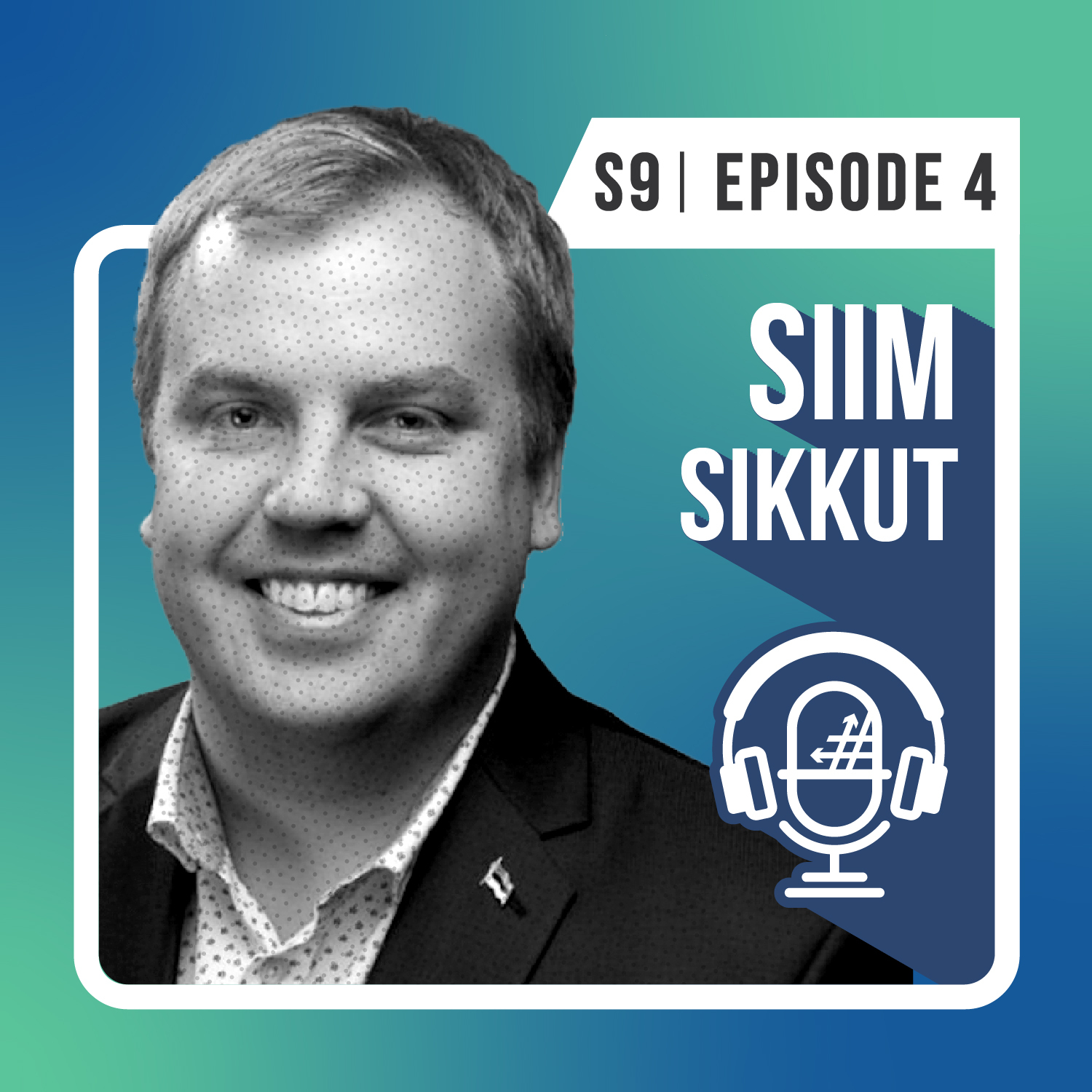S9 E2: Clean Up Your Digital Transformation with Tips from Dyson

The new workplace moves fast and is constantly shifting. If you don’t have the technology to keep up, you could be left in the dust.
My guest today is Richard Vine, Global Collaboration Manager at Dyson. Dyson is a design pioneer for its sleek appliances and smart design, so it’s no surprise that the company takes a similar approach to work by empowering staff with smart tools and training. Let’s hear from Richard about how we can replicate the Dyson approach—proactive, holistic, and people-focused.
Ready to start your digital spring cleaning?
In this episode:
Adopting Microsoft Teams
It’s been an interesting journey, and we were definitely one of the first companies to really adopt Teams. As soon as it came out, I was there testing it myself with my laptop and the iPad; just having a look at it, really seeing what it does and how it works and trying to solve an issue that we had with Skype. Teams worked out of the box straight away on Mac and on PC. We were blown away. We were like, “Wow, this is going to make a huge difference to the organization.”
As soon as we started testing it within our department, everyone loved it. And then we started to showcase it around the business and that’s where we ran into a problem—a good problem: everyone wanted it, but we couldn’t actually deploy it.
We didn’t have the infrastructure and the foundation that we really needed to do a massive global rollout of Microsoft Teams. We didn’t want to fail. We wanted to make sure that everyone felt enabled and that they could use it. You didn’t want to say, “Great, look at this tool. And oh, it doesn’t work because we haven’t put everything in place.”
Fast forward now to where we are, where foundations and networking are in place, and everybody’s using Teams. The other day I was told nearly 19,000 people in Dyson are using Teams globally. It’s used everywhere. We’re upgrading our Teams meeting rooms and it’s such an amazing tool for us.
Dyson: A culture of innovation
We would probably call ourselves like a tech company nowadays as well, I think. If you look at the products that we’ve got now, the amount of technology and the amount of chips that are in there that are constantly evolving, the products are just amazing.
But it’s also about the culture and the people. We have a very young set of people. We have a lot of engineers and in the UK, we now have our own university to give engineers an opportunity to grow, to get an education, but also to work with the other engineers. It’s such a fantastic opportunity.
So, the whole culture is all about using technology, and they love it. They want to use the latest and greatest because they know it will give them an edge. They want to improve. They want to be more productive.
Deploying technology in Dyson is great—the challenge is like that global challenge: how do you make sure that everybody gets on that journey with you? And it’s not just about the UK or even Singapore and Malaysia. We have very large offices in the US as well, and China is growing at a phenomenal rate. So again, we’re trying to keep up with the changes in the technology over there as well.
Culture & Technology
If you look at Microsoft 365 and the wealth of tools there, you’ll realize that not everyone in your organization uses every single one of them. They’re using them differently; some more than others. If you’ve got a finance department that is working internally all the time, they’re sat at their desks and they’re mainly using Excel, there’s no point in going to talk about something that’s not relevant to them. So, you’ve got to make the content relevant.
And when you look at change management and training and culture, when was the last time you actually went and sat for five days in a training? Now, when we look at what we’re doing most—which is looking at very quick video content—like the way TikTok has exploded globally. Now, suddenly, TikTok’s everywhere.
So, we’ve got to adapt as well to make sure that the way we deliver this content is relevant to the people that work at your organization. How do we make sure we engage with people and see to it that they’re using the technology in the right way that is beneficial to them? It comes back to the question: What’s in it for me?
I have gone through so much transformation in terms of IT. And now I’m dealing with collaboration technologies and talking about TikTok, like my 17-year-old does as well. So, you’ve got to adapt and change. It’s just the way IT is. And it’s so much fun.
Dyson in the New World of Work
I have to make sure that we are all collaboratively working together and Teams does that—it brings us all together. We make sure that we put in Teams meetings at the right time so it’s convenient for everyone. Not late, not too early; we’re trying to get that good balance.
We are all over the place globally. I’m in the office quite a lot. I’ve got a gentleman who is in Malaysia who hasn’t been in the office for two years. But at Dyson, we do like to get in the office. We like to get creative and get next to people. When you come into an office where there’s three and a half thousand people who are energized and excited and really collaborative, it is amazing.
The only way I can explain it is like being at a concert when you’ve got that beer group and you can feel that energy moving through. That’s the way Dyson is. We work very well collaboratively remotely, but we also work very well when we are together.
Some of the fun stuff I’d really like to do in terms of the collaboration space is I want people physically in to do some really cool stuff like looking at some of the VR stuff and the artificial reality. Just playing with some things and getting people to talk, engage, and understand our team better. So, we have a very different setup at the moment.
Building Power Apps
In building a power app, you shouldn’t need an instruction booklet. If you need instructions on how to use it, maybe you need to have a look at how you could make it simpler and easier. Test it with the users and do fast modeling and building. And of course, fail fast. Build it. Does it work? No. Let’s go again.
We’ve got a really interesting project system that we’ve built on the accelerator and it’s using Power Apps, Project for the Web, Flow, and all these technologies. The fact is, a lot of our projects are only three days long because they’re very quick to process. Get into the business, understand what they’re doing, enable the business, teach them how to use this technology, and build small and grow. That’s what it’s about.
Make #ShiftHappen with Organization Transformations
If I think of my experience of why we stepped forward towards Microsoft 365 and why we are delivering the technology that we are delivering, it really is for our Dyson people. Everything that my team does and everything that we’re focusing on is about trying to increase productivity and is about enablement.
From the old way that my team used to work—“Hey Dux, how can I help you? Let me build a SharePoint site for you.” I’ve delivered that SharePoint site, but you can’t manage it, so you got to come to me all the time to do any changes, any additions, anything like that. Now, with Microsoft 365, it’s—“Hey Dux, just go to our app. It will deliver your site for you anywhere you go.”
So, the productivity goes from three weeks in terms of building something to around about three minutes. If you start to look at using these new technologies, you can see huge productivity gains with very little risk because you are working within that secure M365 bubble. And so, what we’re trying to say is, you’ve got these huge amounts of tools, look at them and how they’re going to benefit you, and then start to use them.
And don’t think, “Ah, well, if I compare this individual tool to this other individual tool, this other individual tool outside of Microsoft 365 is better.” I’m sorry. The chances are, it probably is. But do you know how much overhead there is in terms of setting it up? Security, single sign on, cost, maintenance people—huge, huge amounts of stuff.
Why cause yourself a problem? When actually, if you looked at MS Teams or Whiteboard or Power Apps and things like that, it does 80% of what you need it to do. Plus, you don’t have to maintain and upgrade it. I don’t have those issues anymore. I’m spending much more time on enablement. I’m spending more time with happy people.
Final Advice for the New World of Work
I would say, enable your workforce. Don’t turn off a lot of this capability, especially around the power platform.
Get involved, look at the tech, see how it’s going to benefit you, and then come up with a good plan. Then, speak to people, get into the community, get good partners and good people to help you. You don’t have to go on this journey on your own. There’s lots of people around that can support you and help you with this.
Today’s takeaway from Rich:
When people come to you, give them tools that are about enablement; that are actually going to help them. Microsoft has got so much learning and documentation and videos, and there’s so much out there that you don’t need to create all of this material. It’s available for you. So, look at it and think, “Well, what are we doing now? How can we improve?”
If you want your business to flourish and grow, you’ve got to move towards this space. You’ve got to make some big decisions.
Episode Resources
Microsoft 365: Microsoft 365 – Subscription for Office Apps | Microsoft 365
Microsoft Teams: Video Conferencing, Meetings, Calling | Microsoft Teams
PowerApps: Business Apps | Microsoft Power Apps
Project for the web: What is Project for the web? (microsoft.com)
Flow: Power Automate | Microsoft Power Platform
Whiteboard: Microsoft Whiteboard
Subscribe where you get your podcasts! Search for “#ShiftHappens” in your favorite podcast app.
With over 20 years of business and technology experience, Dux has driven organizational transformations worldwide with his ability to simplify complex ideas and deliver relevant solutions. He serves as the Chief Brand Officer of AvePoint who has authored the LinkedIn Learning course How to Build Your Personal Brand, the book SharePoint for Project Management, as well as numerous whitepapers and articles. As a public speaker, Dux has delivered engaging, interactive presentations to more than 25,000 people at leading industry events around the world. He also hosts the modern workplace podcast #shifthappens that focuses on how leading organizations navigated their business transformation journey. Dux advocates tirelessly for inclusion, using technology for good, and philanthropic initiatives. Connect with him: http://dux.sy



